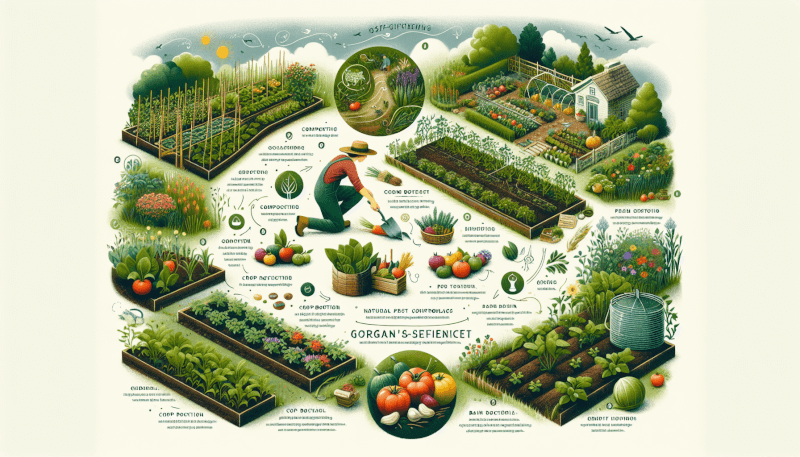If you’re looking to create delicious and nutritious meals straight from your own backyard, then learning how to grow organic ingredients is essential. In this article, we will explore the fundamentals of cultivating a healthy garden, from choosing the right soil and seeds to implementing sustainable practices. With these tips and tricks, you’ll be able to harvest an abundance of organic ingredients to elevate your culinary creations to a whole new level. So grab your gardening gloves and get ready to transform your outdoor space into a bountiful oasis of fresh and flavorful ingredients!
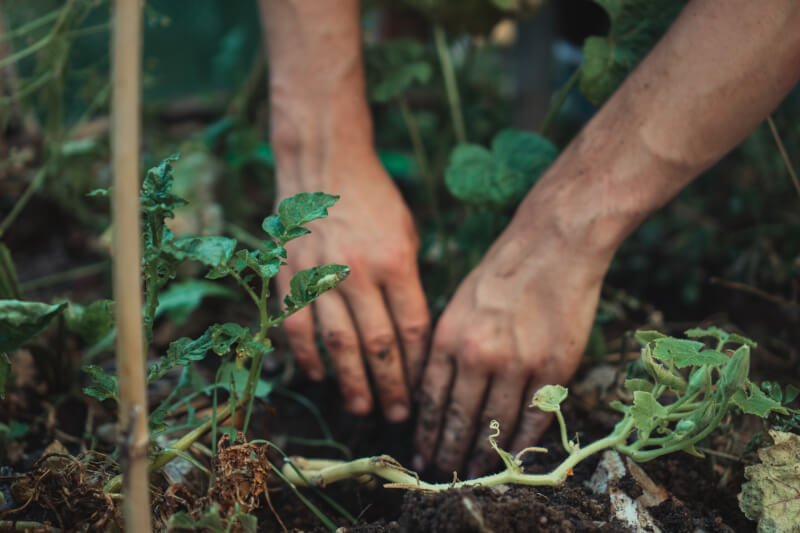
Choose the Right Location for Your Garden
Consider the Amount of Sunlight
When selecting a location for your garden, it is crucial to consider the amount of sunlight your plants will receive. Most vegetables and herbs require at least six hours of direct sunlight each day to thrive. Take note of the areas in your yard that are exposed to the most sunlight and choose a spot that fits this criteria. Avoid planting your garden under the shade of tall trees or close to buildings that may cast shadows.
Evaluate the Soil Quality
Before starting your garden, it is essential to evaluate the quality of your soil. Good soil is the foundation for a successful garden, as it provides the necessary nutrients and structure for plants to grow. Test your soil’s pH levels to determine if it is acidic, neutral, or alkaline, as different plants thrive in different pH levels. Additionally, observe the texture of your soil; it should be loose and well-draining to prevent waterlogging.
Ensure Sufficient Drainage
Proper drainage is crucial for the health of your plants. If your garden soil retains too much moisture, it can lead to root rot and other fungal diseases. To ensure sufficient drainage, avoid low-lying areas that are prone to flooding. If your soil has poor drainage, consider creating raised beds or improving the drainage by adding compost or sand to the soil.
Plan Your Garden Layout
Determine the Garden Size
When planning your garden layout, consider the size and space available in your yard. Take into account the types of plants you wish to grow and their spacing requirements. Some plants, such as tomatoes or pumpkins, require more room to spread out, while others, like herbs or lettuce, can be grown closer together. It is crucial to plan the size of your garden accordingly to ensure that your plants have enough space to grow and thrive.
Create Paths and Walkways
To make your garden easy to navigate and maintain, consider creating paths and walkways. This will allow you to access your plants for watering, harvesting, and other maintenance tasks without damaging them. Use materials such as gravel, wood chips, or stepping stones to create defined paths throughout your garden. Additionally, leave ample space between rows of plants to provide enough room for walking and maneuvering.
Consider Companion Planting
Companion planting is the practice of growing certain plants together that benefit each other. Some plants, when placed near each other, can enhance growth, repel pests, or provide shade and support. For example, planting marigolds near tomatoes can deter pests, while growing basil near peppers can improve their flavor. Consider incorporating companion planting into your garden layout to maximize productivity and decrease the need for chemical pest control.

Select Organic Seeds or Seedlings
Choose the Right Varieties
When selecting seeds or seedlings for your organic garden, it is important to choose the right varieties. Look for plant varieties that are known to grow well in your climate and soil conditions. Consider factors such as disease resistance, yield potential, and flavor when making your selection. Research different varieties and rely on recommendations from local gardeners or experts to ensure the best results.
Look for Certified Organic Seeds
To maintain the integrity of your organic garden, it is recommended to choose certified organic seeds or seedlings. Certified organic seeds are produced without the use of synthetic pesticides, herbicides, or genetically modified organisms (GMOs). They are grown using organic farming methods, ensuring that you are starting your garden with the purest and highest quality seeds available.
Consider Local and Heirloom Varieties
Supporting local seed companies and preserving heirloom plant varieties is not only beneficial for biodiversity but also for taste and cultural heritage. Local and heirloom varieties are often well-adapted to the local climate and have unique flavors and characteristics. Consider incorporating local and heirloom seeds or seedlings into your garden to add diversity and support sustainable agriculture.
Start Seeds Indoors
Gather Necessary Supplies
To start seeds indoors, you will need a few essential supplies. These include seed trays or shallow containers, seed starting mix or peat pots, clear plastic covers or plastic wrap, and a source of light such as fluorescent lights or grow lights. Gather all the necessary supplies before starting your seeds to ensure a smooth and successful seed-starting process.
Sow Seeds in Seed Trays
Fill your seed trays or containers with seed starting mix or peat pots. Moisten the mix with water until it is damp but not soaking wet. Follow the instructions on the seed packet to determine the appropriate depth to sow the seeds. Space the seeds evenly in the tray, ensuring that they have enough room to grow without overcrowding. Cover the tray with clear plastic or plastic wrap to create a mini greenhouse-like environment that will help retain moisture and warmth.
Provide Adequate Lighting
Seeds require sufficient light to grow into healthy seedlings. Place your seed trays under fluorescent lights or grow lights, positioning them a few inches above the seedlings. If natural light is not available, provide 14-16 hours of artificial light each day. Regularly adjust the height of the lights as the seedlings grow to prevent them from becoming leggy. The right amount and intensity of light will promote strong, sturdy seedlings ready for transplanting.
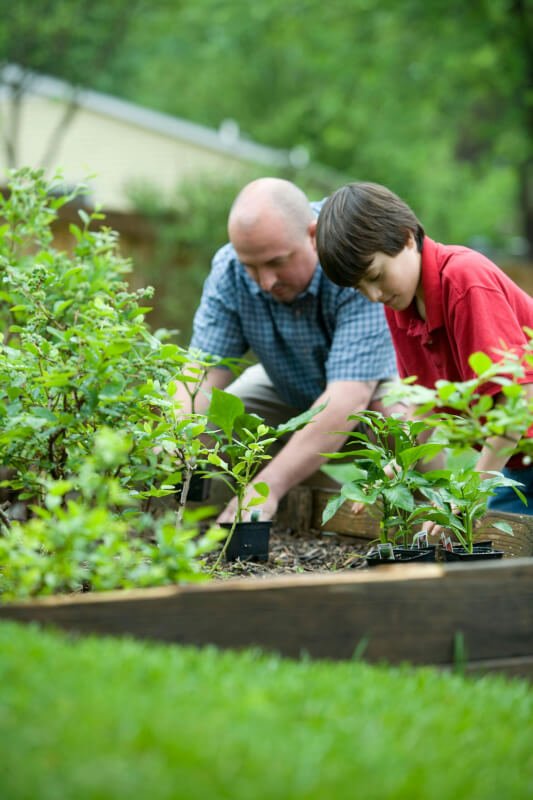
Prepare the Soil
Remove Weeds and Debris
Before planting your seedlings, it is important to remove any weeds, grass, or debris from your garden bed. Weeds compete with your plants for nutrients and can hinder their growth. Pull out the weeds by hand or use a cultivating tool to loosen the soil and remove them more easily. Clearing your garden bed of debris will create a clean and hospitable environment for your plants to thrive.
Amend Soil with Compost or Organic Fertilizers
To improve the fertility and structure of your soil, amend it with compost or organic fertilizers. Compost adds organic matter, improves soil structure, and increases nutrient availability. Spread a layer of compost over your garden bed and gently mix it into the top few inches of soil. Alternatively, use organic fertilizers such as composted manure or fish emulsion, following the recommended application rates on the packaging.
Test Soil pH Levels
Testing your soil’s pH levels is crucial in determining its acidity or alkalinity. Different plants have different pH preferences, and maintaining the correct pH level can significantly impact their growth and overall health. Use a soil testing kit or send a soil sample to a reputable laboratory for analysis. Based on the results, adjust the pH using organic soil amendments such as lime to raise the pH or sulfur to lower it.
Transplant Seedlings
Harden Off Seedlings
Seedlings grown indoors need to be gradually exposed to outdoor conditions before transplanting them into the garden. This process is called hardening off and helps the seedlings acclimate to the sunlight, wind, and temperature fluctuations. Start by placing the seedlings outdoors in a sheltered location for a few hours each day, gradually increasing the duration over the course of a week. Protect the seedlings from extreme weather conditions during this period.
Prepare Planting Holes
Before transplanting your seedlings, prepare the planting holes in your garden bed. Dig holes that are slightly wider and deeper than the root ball of the seedling. This will provide enough loose soil for the roots to establish and grow. Space the planting holes according to the recommended spacing for each plant variety, ensuring that there is enough room for the plants to reach their full potential.
Handle Seedlings with Care
When transplanting your seedlings into the garden, handle them with care to prevent damage to the delicate roots and stems. Hold the seedling by the leaves or the root ball, gently easing it out of the seed tray or container. Place the seedling into the prepared planting hole, ensuring that it is at the same depth as it was in the container. Fill the hole with soil, firmly but gently pressing it around the base of the seedling. Water the newly transplanted seedlings immediately after planting to help settle the soil and provide essential moisture.
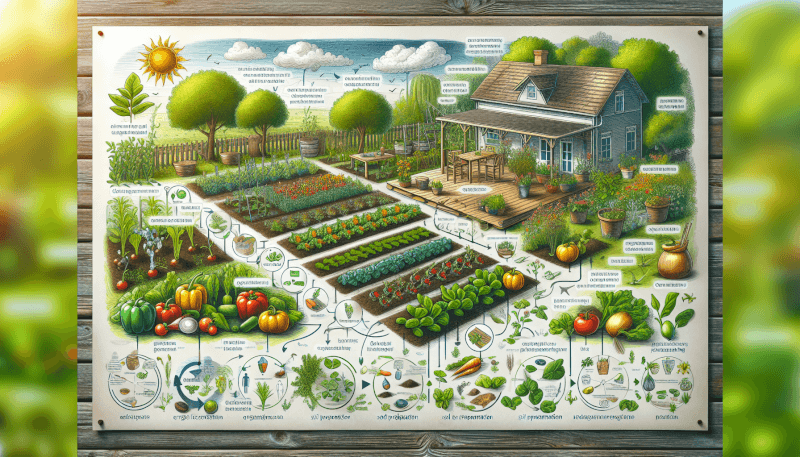
Implement Organic Pest Control Methods
Encourage Beneficial Insects
Incorporating beneficial insects into your garden is an effective way to control pests naturally. Ladybugs, lacewings, and praying mantises are examples of beneficial insects that feed on common garden pests such as aphids, caterpillars, and mites. Create a habitat for these beneficial insects by planting flowers that attract them, such as marigolds, dill, or yarrow. Avoid the use of chemical pesticides, as they can harm both harmful and beneficial insects.
Use Natural Pest Deterrents
There are various natural pest deterrents that can help protect your garden from common pests. For example, planting garlic and onions can deter pests like aphids and cabbage worms. Planting marigolds around your garden can repel nematodes and other soil-dwelling pests. Additionally, placing physical barriers such as row covers or netting can prevent insects from accessing your plants. Incorporate these natural pest deterrents into your garden to avoid the use of harmful chemicals.
Practice Crop Rotation
Crop rotation is an essential practice in organic gardening that involves planting different crops in different areas each year. This helps prevent the buildup of pests and diseases that are specific to certain plants. By rotating your crops, you disrupt the life cycle of pests and reduce the risk of soil-borne diseases. Plan your garden layout in a way that allows you to rotate crops each season, ensuring a healthy and pest-resistant garden.
Watering and Irrigation
Establish a Watering Routine
Proper watering is essential for the health and productivity of your plants. Establish a watering routine that provides consistent moisture without overwatering. Most vegetables and herbs require about 1-1.5 inches of water per week, but this may vary depending on factors such as weather conditions and soil type. Water your garden deeply and infrequently to encourage deep root growth and minimize evaporation.
Use Mulch to Retain Moisture
Mulching your garden is an effective way to retain moisture and suppress weed growth. Apply a layer of organic mulch, such as straw, shredded leaves, or wood chips, around your plants. Mulch helps to insulate the soil, prevent moisture evaporation, and regulate soil temperature. Additionally, organic mulch breaks down over time, enriching the soil with organic matter and nutrients.
Avoid Overwatering
While it is important to provide adequate moisture to your plants, it is equally important to avoid overwatering. Overwatering can lead to root rot, fungal diseases, and nutrient leaching. To avoid overwatering, regularly check the moisture level of your soil by sticking your finger or a moisture meter into the soil. Only water when the top few inches of soil are dry. Adjust your watering routine based on rainfall and the specific needs of your plants.
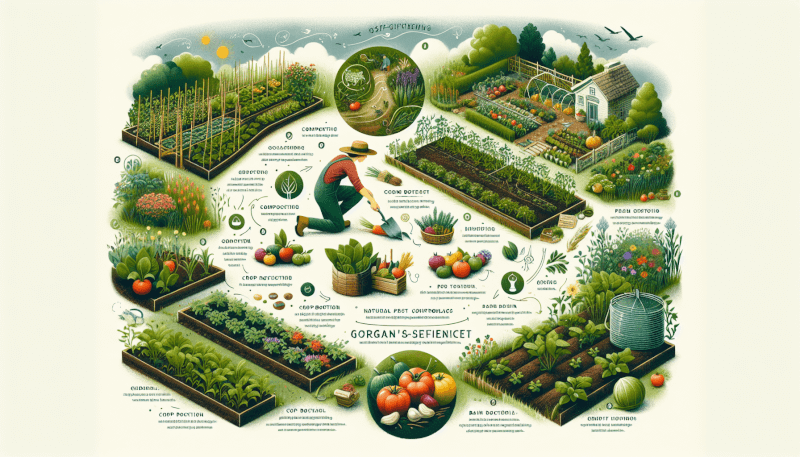
Harvesting and Storing Organic Ingredients
Harvest Vegetables and Fruits at Optimal Times
To enjoy the freshest and most flavorful produce from your garden, it is essential to harvest vegetables and fruits at their optimal times. Each crop has specific signs to indicate when they are ready for harvest. For example, tomatoes should be harvested when they are fully colored and slightly firm to the touch, while lettuce should be harvested when the outer leaves are large and firm. Refer to gardening resources or seed packets for specific harvesting guidelines for each crop.
Properly Clean and Store Produce
After harvesting your organic produce, it is important to properly clean and store it to maintain its freshness and quality. Remove any dirt or debris by gently washing the vegetables or fruits under running water. Dry them thoroughly before storing to prevent mold or rot. Store your produce in a cool, dry place, such as the refrigerator or a root cellar, to extend its shelf life.
Save Seeds for Future Planting
One of the joys of organic gardening is the ability to save and preserve your own seeds for future plantings. To save seeds, allow the fruits or vegetables to fully ripen and mature on the plant. Once mature, collect the seeds and dry them thoroughly. Store the seeds in a cool, dry place in airtight containers. Be sure to label the containers with the plant variety and the date of collection. Saving seeds not only saves money but also helps preserve heirloom varieties and promote seed diversity.
Maintaining Soil Health
Add Organic Matter Regularly
To maintain the health and fertility of your soil, it is important to add organic matter regularly. Organic matter, such as compost or well-rotted manure, improves soil structure, enhances nutrient availability, and promotes beneficial microbial activity. Apply a layer of compost or organic matter to the surface of your garden bed each year, and gently work it into the top few inches of soil. This replenishes nutrients and encourages earthworms and other beneficial organisms to thrive.
Avoid Chemical-Based Fertilizers
In organic gardening, it is essential to avoid chemical-based fertilizers. Chemical fertilizers can harm soil health, beneficial organisms, and the environment. Instead, rely on organic fertilizers such as compost, composted manure, or seaweed extract. These organic fertilizers provide a slow and steady release of nutrients to your plants while enriching the soil. Regularly monitor your plants for nutrient deficiencies and address them with organic fertilizer applications as needed.
Practice Crop Rotation
As previously mentioned, practicing crop rotation is an effective way to maintain soil health. By rotating crops each season, you avoid depleting specific nutrients in the soil and reduce the risk of diseases and pests. Plan your crop rotation schedule to ensure that plants from the same family are not planted in the same area for at least three years. This allows the soil to regenerate and maintains a healthy balance of nutrients for your plants.
By following these steps, you can successfully grow organic ingredients for healthy garden recipes. Starting with the right location and planning your garden layout, selecting organic seeds or seedlings, and providing the necessary care throughout the growing season, you can enjoy the satisfaction of fresh and nutritious produce straight from your garden. Organic gardening not only benefits your health but also contributes to a more sustainable and environmentally friendly way of living. So go ahead, get your hands dirty, and experience the joy of growing your own organic ingredients!

